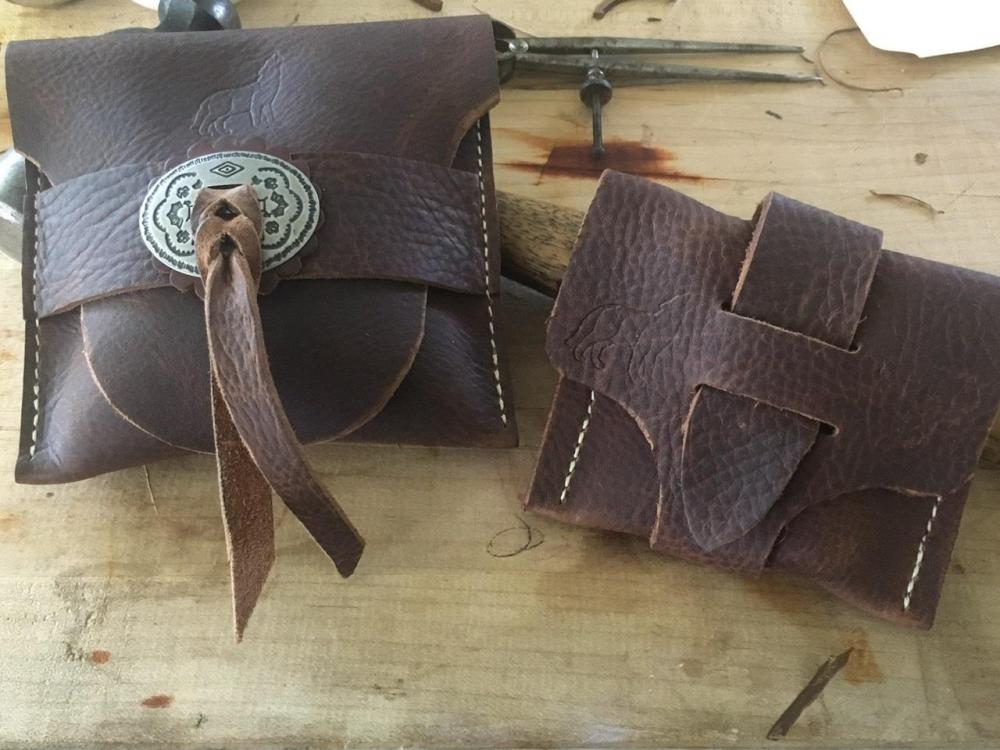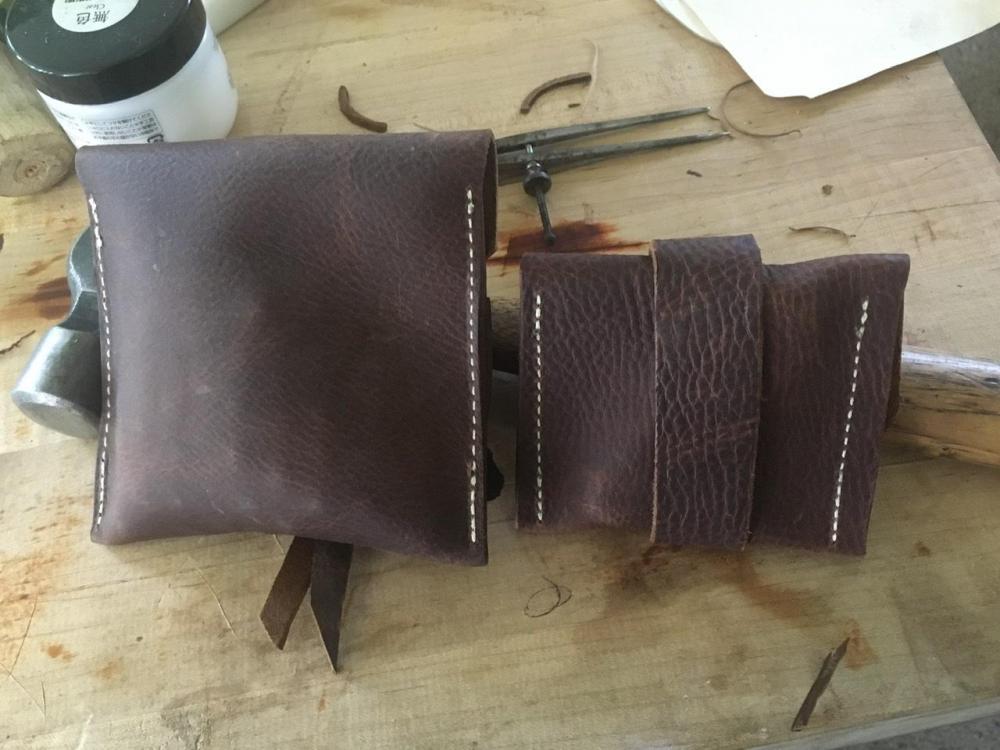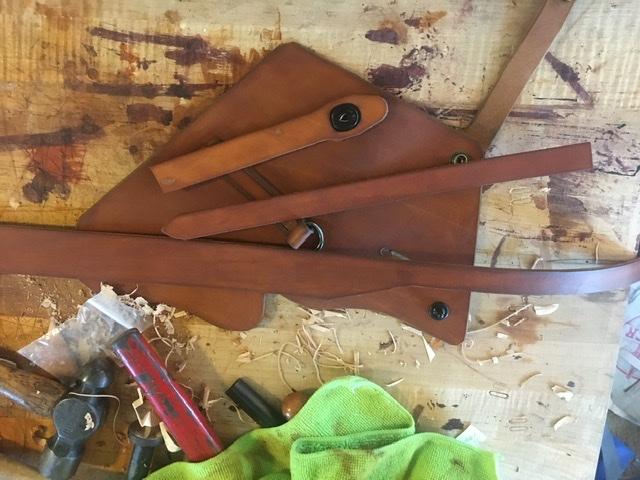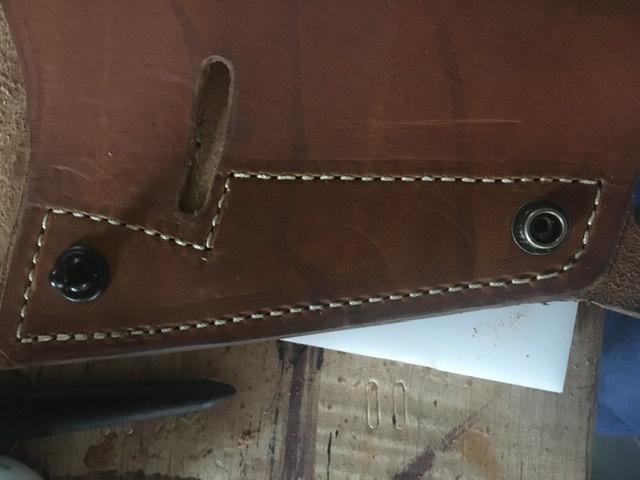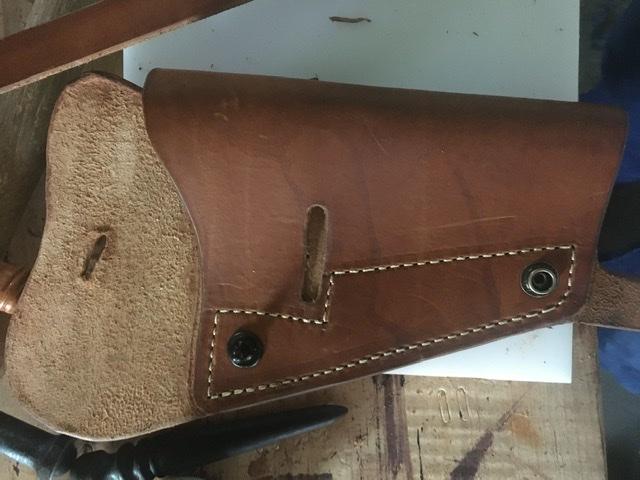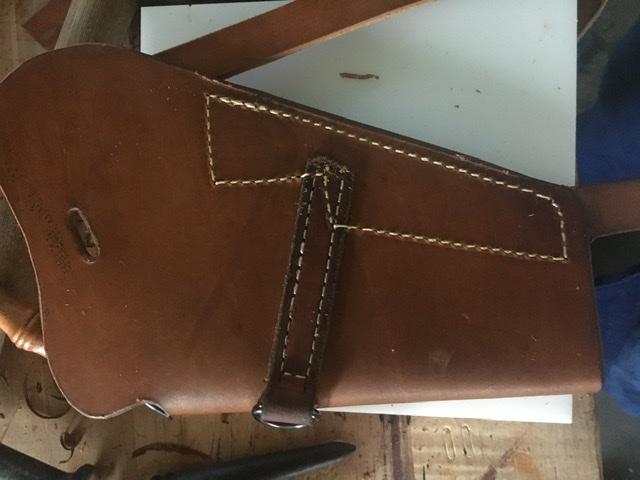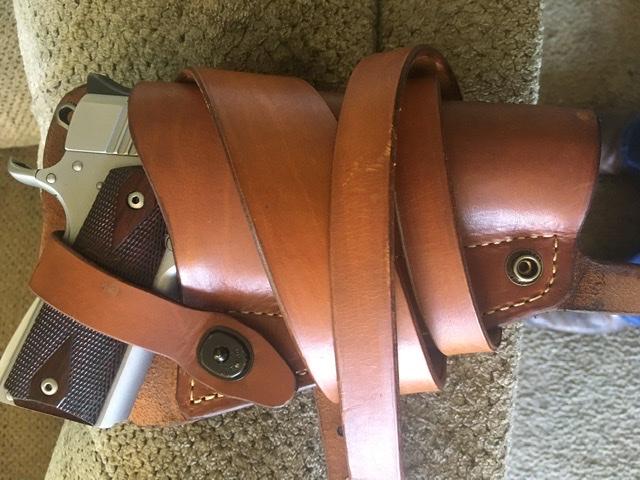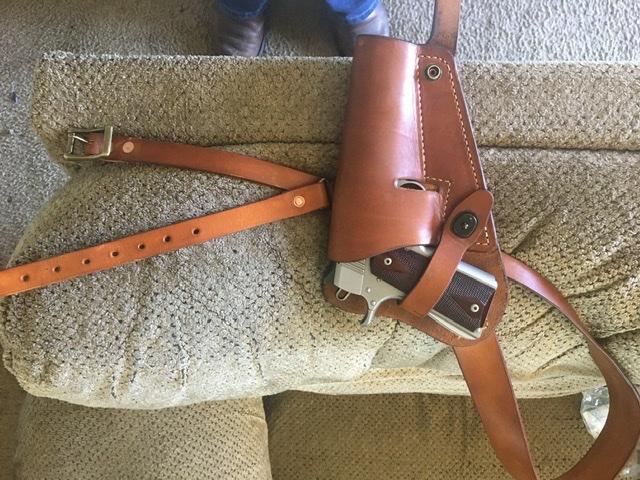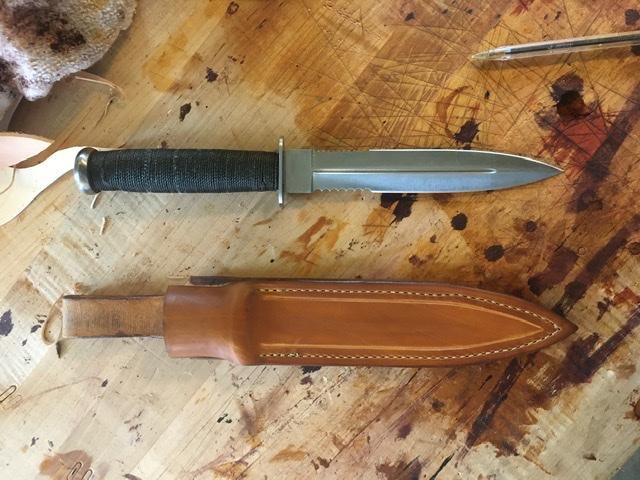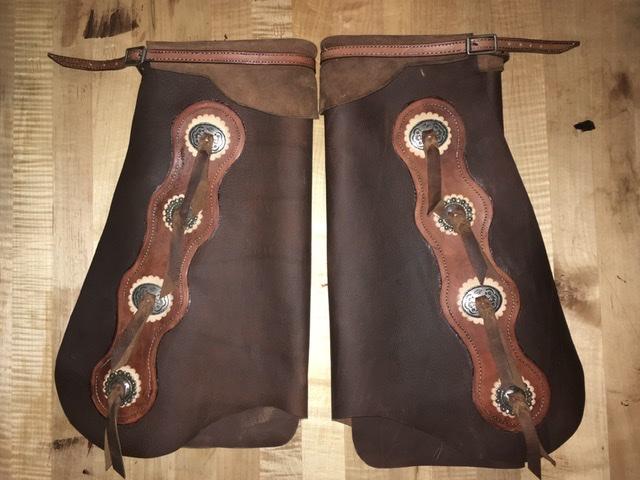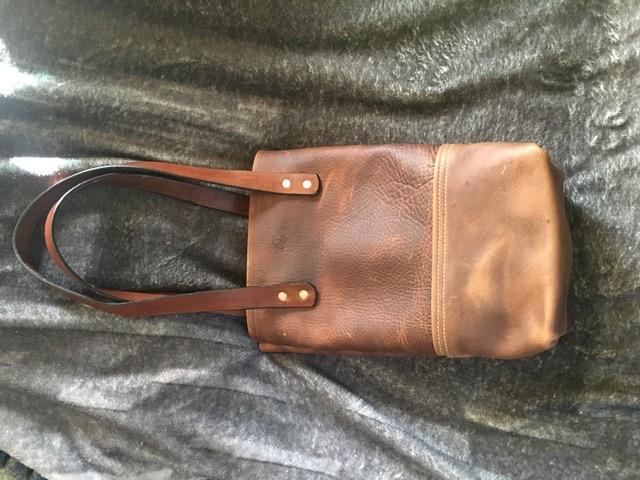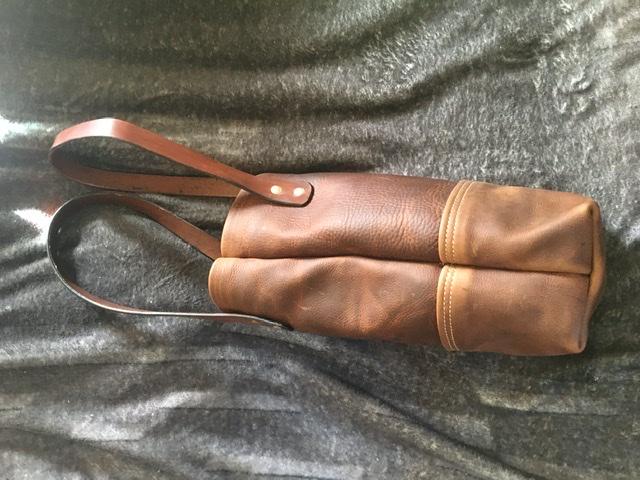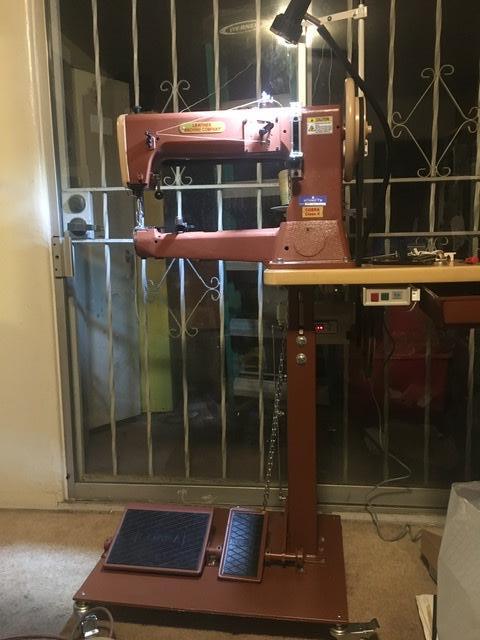
Kcstott
Members-
Posts
125 -
Joined
-
Last visited
Content Type
Profiles
Forums
Events
Blogs
Gallery
Everything posted by Kcstott
-
Once a person that is accustom to residential sewing machine sees a 7x4 series needle it all makes sense. Well at least a person with some mechanical inclination to understand how much horse power is required to drive that needle. My Janome HD1000 will sew up to a total of 4 oz with 69 thread and a #18 needle but that is pushing the machine for everything it is worth and quite literally shortening it's life span. I don't do that anymore. I'll sew up to a 2 oz stack with Coats and clark upholstery thread what ever weight that is and the same #18 needle. then sew that to a wallet shell with up to 138 on the Class 4. Home machine are for light weight materials and as you stated will have a tough time getting through the seem on a pair of jeans.
-
Teaching the daughter how to sew
Kcstott replied to Kcstott's topic in Purses, Wallets, Belts and Miscellaneous Pocket Items
I very much appreciate the kind words. -
Please share your tips. and yes Wiz I did see and read more than once your Dumbing down of the cowboy or class 4 machine. Very good info please find below my tips that work on my machine. I’m brand new to this so please feel free to hint, suggest, nudge, critique, or straight up call BS. what I have found for better range of tension adjustment is to use the eye on the top tension only coming in to the tension disks. Then lace as usual. This works well with 138 on two or more layers of 4 oz oil tanned and i'm sure it will work fine for 96 or i could try my 69 thread set up. What I have found to work for 69 poly thread (it’s all I had) is the same as above except I only go around the second tension wheel once. Both of these allowed me to get more range on the top tension with the bottom tension almost at zero. I used a #23 needle for the 138, & a #18 round point for the #69 thread. I tested both on the same piece of leather, two layers of oil tanned. I made no adjustments to the bobbin tension. Which may be needed again this was a short test run and produced predictable results with very linear adjustment. so what have you found to work?
-
I had no problem parting with nearly $4000 not to mention the work it took to haul the Cobra Class 4 into the house in two pieces. Front yard has a set of steps it's about a six foot elevation change to the front door and no help to be had. Yeah I'm never hand stitching again other than a few little buck or box stitches and what ever you call the stitch where you butt two pieces together. I can live with that.
-
My version of the M3 holster
Kcstott posted a topic in Gun Holsters, Rifle Slings and Knife Sheathes
-
That is Tandy Eco Flo oil dye and the color is wheat. One coat of dye, one coat of fiebings neats foot oil after the oil dye soaked in and fiebings brown edge dressing (not edge kote) on the edges. Edges were hand burnished with tokenole prior to edge dressing. I have yet to seal the leather so I may hit it with one more coat of dye. it's starting to really lighten up.
-
Knife sheath build
Kcstott replied to Vikefan's topic in Gun Holsters, Rifle Slings and Knife Sheathes
very nice and I like the border tooling as well -
Thank you. The machine is a Cobra Class 4. Now I just need to figure out what to do with the part the is molded over the hilt. I just want a friction fit and I have that now but a proper cut instead of just squared off.
-
Forgive me if someone else already figured this out but me being a former machinist and a current Precision machine tool mechanic. When someone says "the numbers mean nothing" well someone put them on there for a reason I'm referring to the youtube video on the class 4 machine that was demoed by slickbald I believe the name is. Anyway Being American we live in a world of stitches per inch and threads per inch. and after some testing and measuring tonight the number on the scale of the stitch length control do mean something and they are actually quite accurate. I'll use metric thread form as an example. We Americans use threads per inch while the metric countries us millimeter pitch or mm per thread and this system of thought carries over to the sewing machine. The numbers are how long a single stitch is in millimeters. I checked every setting 4, 6, 8, 10, and 11 and all are close enough to their corresponding mm length and when i mean close enough i mean within a few thousandths of an inch close enough. so here's the conversion rounded off for ease of use. 2mm between 4 and 0 = 12.7 stitches per inch 4mm = 6.5 6mm = 4.25 8mm = 3 10mm = 2.5 11mm = 2.3 Now to get the range the LMC advertises you'd need to set the control lever at 1.5mm to get 22 Stitches per inch and then don't worry about anything above a 8mm setting. Don't take that as a fault or critique. It's merely a statement of what the machine is truly capable of. and saying the machine will stitch 3-22 stitches per inch is very accurate and conservative. I will be leaving this machine in my will as I know it will out live me. Write it down if you care but the numbers do in fact mean something.
-
-
Dedicated wallet machine advice
Kcstott replied to guntechholsters's topic in Leather Sewing Machines
flat material, flat projects, flat bed. i.e. belts, straps, wallets and the like. Now if by wallet you also mean a ladies clutch well now that's a bag in my book a very small bag but still a bag and a cylinder arm class 26 would be a better choice. a work table can be had for them. -
Dedicated wallet machine advice
Kcstott replied to guntechholsters's topic in Leather Sewing Machines
I can't say what is best but I know what I would buy and that's a Cobra class 18 flat bed machine. will run up to 207 so 138 would be no problem. A bag machine usually means a cylinder arm machine but not always. -
Wallet work can be done with 136 and it's not to heavy looking. I would not go smaller than about a 96 though. I just finished a small hand bag that I used 138 on and the thread and stitch looks perfectly sized for the effect I was going for. It would not be out of place on a wallet. When I get around to doing some wallet and passport covers I'll be sewing them with 138
-
Made this bag for my daughter. I stole the design idea from a video the Little King Goods put up on you tube. The narrowness of the bag is due to lack of material. I used what I had left over from the Botas project. I sewed this up on my new class 4 cobra. Tomorrow I will pull the internal rivets on the bag and put the decorative stitch around the top rolled edge that I forgot. Bag is about 10" wide and about 16" tall The botas were sewn on my jenome HD1000 and it was struggling to get the job done hence the inconsistent stitch length. I did find a rub stick and remove the contact adhesive residue.
-
Warning I have leather sewing experience rated in hours not years so..... If you never plan on running thread heavier than 207 the 26 will work. If you plan on running 207 and 277 you will need the class 3/4 machines. I just bought a class 4 and it is far an wide a heavier machine than a 26. Class 3/4 will run as light as #69 thread with proper set up and adjustment although it can be time consuming to run it that light. it took a while just to drop down to 136. I highly recommend calling Steve as mentioned above, I've never met a more helpful group of people in my life. they will be getting a lot more business from for sure
-
Ill take a look at that in the morning and look at ,my machine.
-
Well that’s what experience gives you and the forgiven of a good machine. i need to play with the presser foot pressure and the step height and other stuff I don’t even know about. thank you to for that bit of experience. I’m sure like every other piece of machinery I’ve ever owned there is going to be a learning curve for sure. I will e taking my sweet time playing with personal projects that I refused to hand stitch. A personal facepalm is that in getting back into leather work I found pricking irons and saddle stitching. Yes I’m that much of a novice.
-
Well wizcrafts. All I can say is thank you. best advice ever. I talked to Steve up at leather machine co. Set up a day to pick up a machine. And was on my way in a few hours. now the few hours was my fault. Dave, Steve, Vince, and Heather, all helped me out a great deal. I got a demo on machines they were prepping, they are getting ready for the show in Arizona. So, the class four is by far the best sewing machine I’ve ever run, my lord this thing is built like a take but has the finesse to be smooth and easy to run Thank you for the advice. My only complaint is the machine is heavy and took a little work to get in the house but I was stitching within an hour.
-
Everybody wants a motor but no one stops to think about rpm and lubrication. I look at instances like this as duty cycle. How long was the original design intended to run non stop? Not very long being hand cranked.
-
I don't own a cobra class anything but will in the next week or so. My understanding is: I want them both, but I may not be able to swing the cost of EPS on a class 4 machine. I for sure want a speed reducer to make it easier to control the work and stitch placement. EPS is there (I assume) to help with production as it positions the needle where you need it for what you are doing with nothing more than a position of the pedal.
-
That was what I wanted to know. I don’t mind over buying but under buying is never fun. Ok class 4 it is. I’ll read the blog too, I appreciate the link. i do have a Janome HD1000 that can sew garment grade leather. It can handle up to a total stack up of .090”ish. And #69 thread with a # 18-21 needle. But that is the absolute max. I’ve tried to double stack oil tanned 4oz and the machine just doesn’t have the torque to push through. buy once cry once as they say. thanks again
-
Ok I have the leather machine co. right up the road from me and I'm ready to buy a machine. I'm a hobby leather worker. Question is which one? A class 26, class 3/4? What I plan on sewing is gun belts and holsters on down to lighter stuff. I don't think I'll need to run a thread heavier than 277 but I don't want to be at the max capacity of a machine and fight it to sew. If that's the case with the class 26 I'll just step all the way up to a class 4 and never look back. but if the class 26 can run 277 all day with no issues I don't need the extra presser foot lift. Money is not the issue. Size of the machine is not the issue. I just don't want to over buy when I could dump the extra cash into supplies with the class 26 or buy the class 4 and have far more capacity and have to scrimp buy on only a few spools of thread for the time being. So what say you all?


